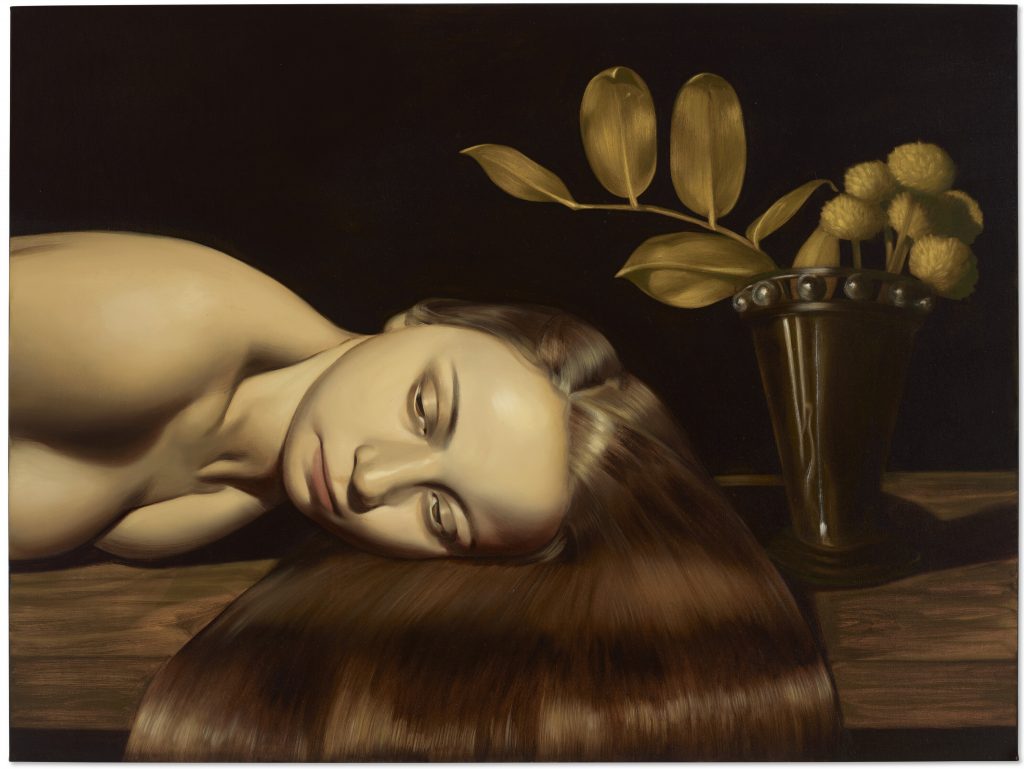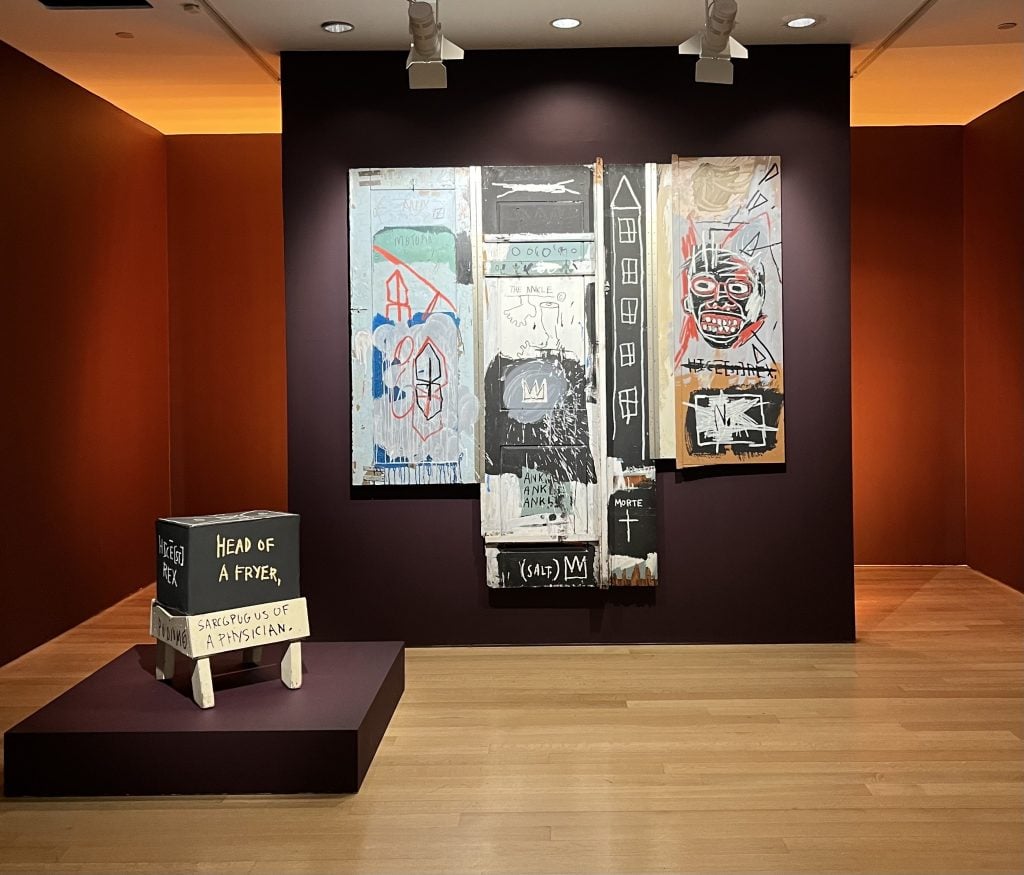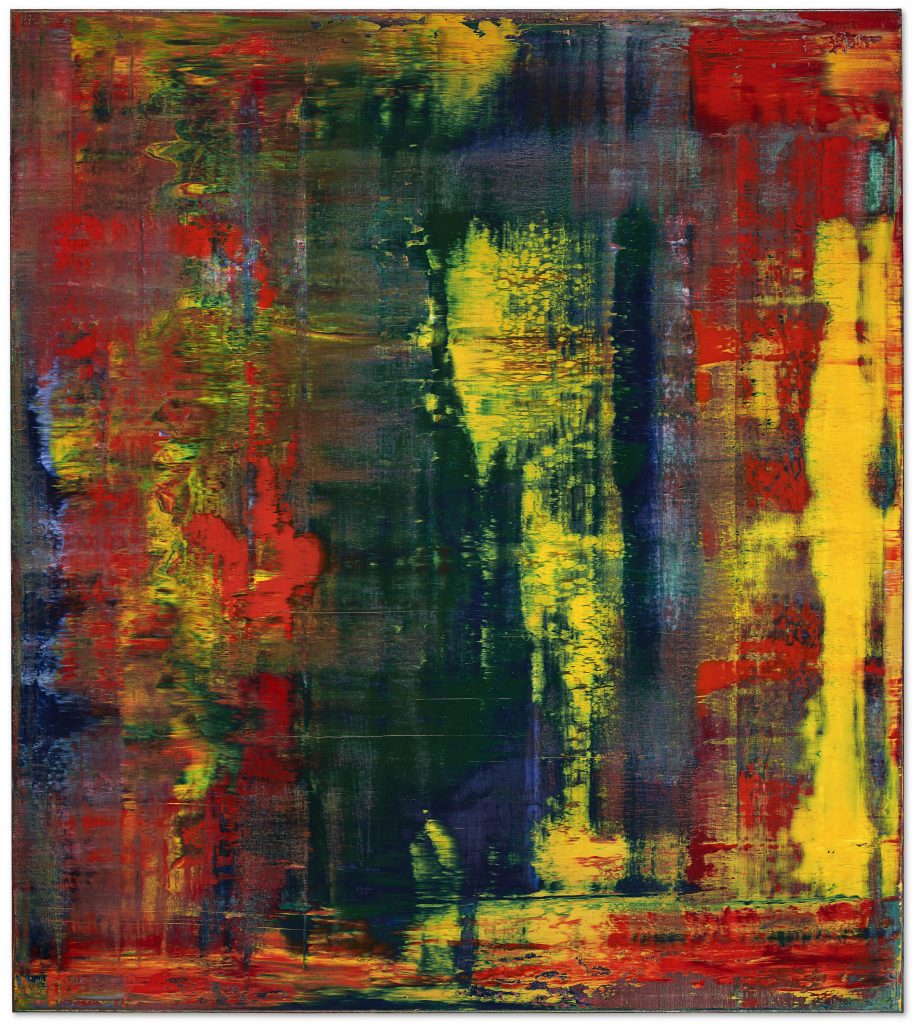Auctions
Bidders From Asia and Works by Young Artists Propel Christie’s $103.1 Million 21st-Century Art Auction
Ten new records for works by artists including Ewa Juszkiewicz and Joel Mesler were also set.

Ten new records for works by artists including Ewa Juszkiewicz and Joel Mesler were also set.

Katya Kazakina

Where is Asia?
That was the question on a lot of people’s minds after the $317.8 million Ammann Collection sale at Christie’s on May 9, when collectors from the continent accounted for just 10 percent of bidding activity. Larry Gagosian faced no competition from Hong Kong’s salesroom when he snapped up Warhol’s Shot Sage Blue Marilyn in just four minutes for $195 million.
The auction house’s 21st-century sale on Tuesday, however, brought some clarity to the market, with fierce bidding from Asia on many lots. The event’s auctioneer, Georgina Hilton, was even summoned from Hong Kong to conduct the New York sale.
All 31 lots sold (although two pieces by Jean-Michel Basquiat were withdrawn last-minute) for a total of $103.1 million, just shy of the $106.5 million high estimate. Ten artist records were set, with prices for emerging stars soaring into the millions of dollars. The withdrawals kept the sale from matching the equivalent auction a year ago, which generated $211 million in part thanks to Basquiat’s $93 million skull painting, suggesting a slowdown at the highest end of the market, while demand for emerging art remained buoyant.

These two works by Jean-Michel Basquiat were withdrawn before Christie’s sale began on May 10, 2022. Photo: Katya Kazakina
“It’s a new world,” said New York art dealer Edward Tyler Nahem. “You’ve got a number of young buyers, buying young art. We are seeing very high prices.”
Asian collectors made their presence known from the very first lot of the sale, a 2020 painting by 27-year-old Anna Weyant. Titled Summertime, it depicts a young woman, resting her head on a table, hair drooping down like a tablecloth.
It was the first of three Weyant paintings to be featured in auctions this month (Sotheby’s and Phillips will also have Weyant in their high-stakes evening sales). The work was highly anticipated after the young painter joined Gagosian, the mega-gallery whose owner happens to be Weyant’s boyfriend.
Estimated at $200,000 to $300,000, Summertime eclipsed that figure in the matter of seconds. At least seven bidders chased after the painting, with two final hopefuls battling it out in Hong Kong.
When the gavel finally fell at $1.2 million, the room erupted in applause. The final price, with fees, was $1.5 million, a record for the artist, who made her auction debut just two months ago.

Ewa Juszkiewicz, Portrait of a Lady (After Louis Leopold Boilly) (2019). Courtesy of Christie’s Images, Ltd.
A similar scenario played out again and again. Spins from Swiss (2017), a painting by Shara Hughes, was underbid by Asian clients, selling for a record $2.9 million; Matthew Wong’s Green Room (2017) was pursued by several Asian clients to a new auction record of $5.3 million, and purchased in the Hong Kong salesroom.
Asian bidding helped establish new auction records for Ewa Juszkiewicz ($1.6 million) and Joel Mesler ($907,200). Outtara Watts, 65, made his evening sale debut with a collage, Afro Beat, that fetched $781,200, obliterating his previous auction record of $54,591.
Things were a lot less boisterous at the higher end of the market, and many works by artists who drew frenzied bidding just a few years ago, including Christopher Wool, Mark Grotjahn, and Adrian Ghenie, sold on single bids. Asian interest seemed to have been switched off with a click.
The same fate befell the evening’s top lot, Gerhard Richter’s Abstraktes Bild (1994), which had belonged to Eric Clapton and set an auction record for the German painter in 2012, at $34 million. Richter used to be in high demand in Asia. This time around, the work was estimated at $35 million and backed with a third-party guarantee, ensuring it would sell. The backer was the sole bidder for the work, which hammered at $33 million ($36.5 million with fees).
“The shifting sands of the market,” is how Lock Kresler, senior director of Helly Nahmad gallery in London, described the situation.

Gerhard Richter, Abstraktes Bild (1994). Courtesy of Christie’s Images, Ltd.
For some new buyers, the purchases of today may indeed prove to be quicksand.
Take Japanese collector Yusaku Maezawa, the anonymous seller of Lobster (2007-2012), a sculpture by Jeff Koons.
Maezawa, who is best known for paying a record $110.5 million for a Jean-Michel Basquiat in 2017, bought the Koons at Christie’s for $6.9 million six years ago to the day as part of his first big shopping spree. (The same day, he also bought a billboard-scale 1982 Basquiat painting for $57.3 million that’s returning to the market next week, at Phillips.)
But the Koons auction prices have declined. This time around, Lobster, which was guaranteed by Christie’s, hammered at $3.1 million, below its estimated range of $3.5 million to $5.5 million. (The final price, with fees, was $3.8 million).
Christie’s executives said the 21st Century sale was designed to pave the way for a new generation of clients, who will eventually determine the new taste; 10 percent of the bidders were millennials, the auction house said.

Refik Anadol, Living Architecture: Casa Batlló (2022). Courtesy of Christie’s Images, Ltd.
“When I started in 1986, Warhol was considered cutting-edge,” said Christie’s president Jussi Pylkkänen. “Now Warhol is iconic.”
The cutting edge keeps shifting — most recently to NFTs, “a critical part” of the new frontier and youth culture, according to Pylkkänen.
And so, Christie’s concluded the auction with Living Architecture: Casa Batllo, a newly minted NFT by artist Refik Anadol, inspired by the iconic Antoni Gaudi building in Barcelona, Spain. The buyer could pay in cryptocurrency and would receive backup source installation files, a custom computer with software, a VR headset — as well as a gala dinner for 10 people — the auctioneer announced before opening the lot for bidding.
Less than three minutes later, the work sold for $1.4 million. The room erupted in applause.